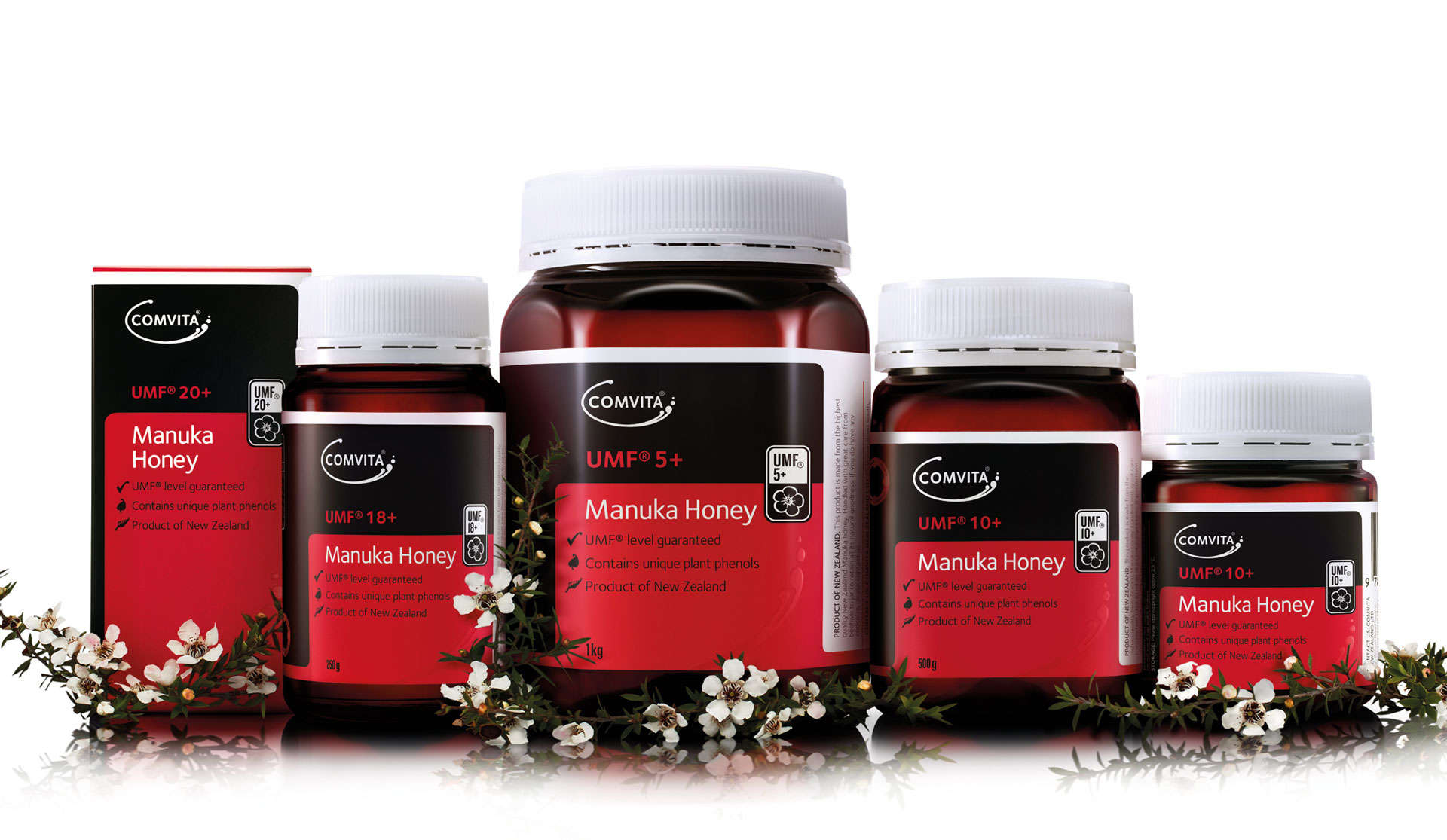What is Manuka Honey?
Manuka is a tree native to New Zealand, growing uncultivated throughout most of the country. Its’ flowers are pollinated by introduced European honey bees, these same bees gather the Manuka nectar which is what the bee turns into Manuka honey – which is then sold in health food shops worldwide.
Whilst medical grade honey is praised for its antibacterial properties, what makes Manuka different is the presence of three signature compounds, Leptosperin, DHA and Methylglyoxal (MG), these together indicate high quality, authentic Manuka honey.

Manuka
What does the UMF® rating mean?
The Unique Manuka Factor (or UMF®) mark that you often see on select Manuka honey jars is an independent verification of authentic Manuka honey, by the Unique Manuka Factor Honey Association (UMFHA).
The UMFHA is an independent body whose testing process measures the presence of all three signature compounds, Leptosperin, DHA and Methylglyoxal, that together indicate high quality, authentic Manuka Honey.
Other rating systems test for only one or two of these compounds. MG can be added to honey, so this alone cannot determine authentic Manuka.
Or, others may even test for something else entirely, like pollen, which is an erroneous measure, because it’s virtually impossible to differentiate Manuka and Kanuka pollen. When it comes to UMF®, there really is no comparison – it’s the global independent standard for Manuka honey.
“Where the UMFHA is going with grading is looking at the expression of those key compounds. The more that are present, the higher the grade,” explains Comvita Manuka expert Tony Wright.
For more information on UMF® and the grading system, visit the UMF website here.
How good is medical grade Manuka honey for us?
The earliest record of therapeutic honey use dates as far back as 2000 B.C. and honey has been used as a healing substance throughout history by Egyptian, Greek, Roman, Hindu and Chinese cultures.
Today, Manuka honey has gathered high profile fans such as Gwyneth Paltrow and Scarlett Johansson, who believe in the healing power of the plant.
There are also over 130 case studies, laboratory studies and trials supporting Comvita’s high grade Manuka-based Medihoney® wound care products.
“We’ve done a lot of work defining what Manuka honey is, especially through the Manuka ID project,” explains Tony Wright.
“The research that has been undertaken through this project, by Comvita, UMFHA and Analytica Laboratories, allows us to define exactly what Manuka is. The project has identified the three key compounds and 14 others than are able to give us confidence that the honey has come from Manuka.”
Tony Wright also explains that going forward, researchers will be able to identify from which regions the highest grade Manuka can be found, and establish why this is.

How should I use it?
If you want to incorporate Manuka honey in your diet, or are looking for a natural product with medical grade honey suitable for the management of wounds of dry skin, Manuka experts Comvita have a range of products to choose from.
Their Manuka Honey and Blackcurrant Elixir is all natural and made with UMF 10+ Manuka honey, and their Manuka Honey Lozenges with Propolis are perfect for soothing a tickly throat.
Their Medihoney® is also available for wound healing, and as an aid for dry skin.



